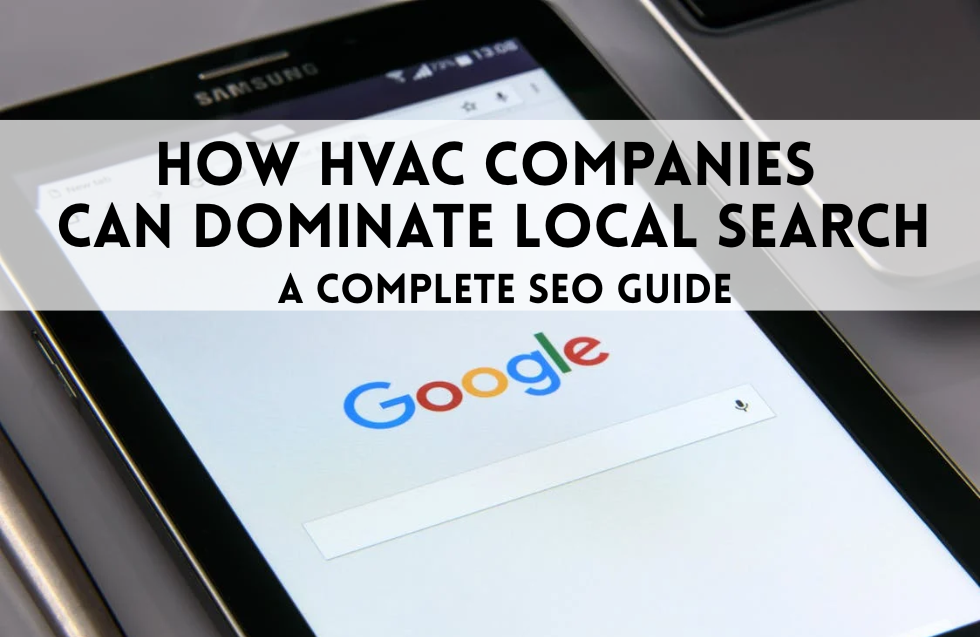While some HVAC contractors struggle to keep their phone ringing, others field so many calls they’re forced to expand their team just to keep up. The difference isn’t luck—it’s strategic domination of local search results. In today’s digital marketplace, homeowners experiencing HVAC emergencies don’t open phone books; they grab smartphones and make snap decisions based on what Google shows them.
The harsh reality? Most HVAC companies remain invisible during these critical moments despite basic marketing efforts. Professional HVAC SEO services make the difference between visibility and obscurity, as industry statistics reveal that 85% of emergency repair searches result in calls to companies appearing in the top three local results. Contractors positioned outside these coveted spots miss thousands in potential revenue that lands effortlessly in competitors’ pockets instead.
For HVAC business owners watching competitors grow while their own phones remain silent, this guide reveals the exact strategies market leaders use to capture high-value emergency calls and dominate their service areas. Implementing specialized HVAC SEO services is no longer optional but essential for survival in increasingly competitive markets.
The Hidden Cost of Search Invisibility
When homeowners face HVAC emergencies—a failed AC during a heatwave or a dead furnace in freezing temperatures—their decision-making window shrinks dramatically. Research shows:
- 97% of emergency searches lead to calls within 10 minutes
- 74% of homeowners never scroll past the first three Google local results
- 82% of emergency calls convert to same-day service appointments
- Average emergency service tickets range from $600 to-1,200
Each emergency call missed through poor search visibility represents more than just one service appointment. It constitutes potentially decades of lost maintenance contracts, system replacements, and referrals—easily exceeding $10,000 in lifetime value per household.
The 7-Step HVAC Search Domination Blueprint
Step 1: Weaponize Your Google Business Profile
While most contractors merely claim their Google listing, industry leaders transform theirs into conversion machines:
Critical Optimization Points:
- Select “Heating and Air Conditioning Contractor” as primary category
- Add secondary categories targeting emergency services
- Include service area information precisely matching website content
- Upload geo-tagged photos of service trucks in target neighborhoods
- Add service menus with emergency response pricing
- Respond to reviews within 4 hours (not days)
Industry Insight: Google’s algorithm heavily weighs review recency. HVAC companies generating 5-8 new reviews monthly see 4.6× better Map Pack positioning than those with stagnant review profiles.
Step 2: Deploy Neighborhood Authority Pages
Generic “service area” pages devastate local rankings. Market-dominating HVAC companies create individual, hyper-optimized pages for each priority neighborhood:
example.com/ac-repair-oakwood-heights
example.com/furnace-installation-riverdale
These pages must include:
- Neighborhood-specific climate challenges
- Local landmarks and cross streets
- Area-specific response time guarantees
- Testimonials from that exact community
- Photos of completed work in those neighborhoods
Each properly optimized neighborhood page can generate 3-5 exclusive monthly emergency calls from that specific area.
Step 3: Implement Technical Emergency Signals
While visible content matters, backend technical optimization creates massive competitive advantages. Search engines prioritize HVAC websites sending clear emergency service signals:
- Schema markup specifying 24/7 availability
- Page load speed under 2.5 seconds
- Mobile click-to-call buttons above the fold
- Simplified contact forms (3 fields maximum)
- Breadcrumb navigation reinforcing service+location hierarchy
HVAC websites with proper emergency schema markup see 27% higher click-through rates during peak emergency seasons.
Step 4: Create Panic-Moment Content
When AC units fail or heating systems break down, homeowners use specific search phrases revealing high-stress emergency situations:
- “AC not cooling emergency repair near me”
- “Furnace won’t turn on freezing cold”
- “Strange noise from AC need immediate help”
Top HVAC companies create dedicated landing pages matching these exact panic-moment searches. These pages emphasize:
- Same-day service guarantees
- Emergency response times
- Financing options for unexpected repairs
- Simple contact methods requiring minimal user effort
Companies properly targeting these panic moments typically capture 5-8× more emergency calls than competitors relying on generic service pages.
Step 5: Establish Local Citation Authority
While competitors focus exclusively on Google, industry leaders build citation authority through:
- HVAC-specific directories (ACCA, HomeAdvisor)
- Local chamber of commerce listings
- Community business associations
- Neighborhood Facebook groups
- NextDoor business verification
Studies show HVAC companies with consistent NAP (Name, Address, Phone) information across 25+ citation sources rank 2.3× higher in local search results.
Step 6: Leverage Seasonal Keyword Targeting
HVAC search behavior follows predictable seasonal patterns. Market leaders adjust their content strategy months ahead of these shifts:
Spring Strategy (February-April):
- Target “AC not working after winter” keywords
- Create content addressing system startup issues
- Launch Google Local Service Ads for cooling maintenance
Summer Strategy (May-August):
- Heavily target emergency AC repair terms
- Create content addressing specific cooling failure symptoms
- Focus review generation efforts on AC services
Fall Strategy (September-October):
- Target “heating system checkup” keywords
- Create content addressing winter preparation
- Launch campaigns targeting first-time homeowners
Winter Strategy (November-January):
- Heavily target emergency heating repair terms
- Create content addressing specific heating failure symptoms
- Focus review generation on heating emergency response
This seasonal approach ensures maximum visibility precisely when specific services face peak demand.
Step 7: Implement Call Tracking with Attribution
Market-dominating HVAC companies implement sophisticated call tracking revealing exactly which marketing efforts generate the highest-value jobs.
Their tracking systems identify:
- Which specific pages generate emergency calls
- Which neighborhoods produce highest average tickets
- What exact search terms lead to system replacement inquiries
- Which technicians convert maintenance calls to replacement opportunities
This data enables continuous optimization, focusing resources on highest-ROI marketing efforts.
The Competitive Reality
The HVAC industry faces unprecedented consolidation as private equity-backed national chains expand aggressively into local markets. Their sophisticated digital marketing strategies threaten smaller contractors who delay implementing proper search optimization.
Independent HVAC companies that fail to establish strong search presence increasingly find themselves:
- Relegated to low-profit service calls rejected by larger competitors
- Forced to slash pricing to remain competitive
- Trapped in feast-or-famine business cycles
- Limited to word-of-mouth growth in an increasingly digital marketplace
However, contractors implementing these seven steps systematically dominate their local markets regardless of size, establishing territorial digital dominance that even well-funded national chains struggle to displace.
For HVAC business owners serious about sustainable growth, the path forward is clear: either master local search visibility or gradually surrender market share to competitors who do.












